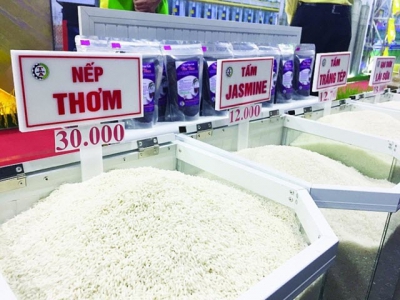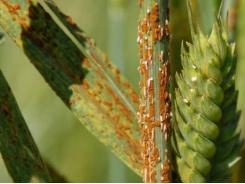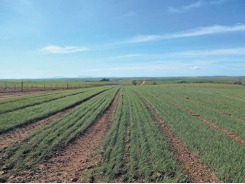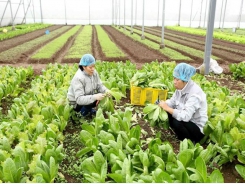The Rice shouldnt be rescued

Focusing on managing rice quality comprehensively is a sustainable solution of rice export in the context of a volatile world market and posing higher requirements for quality.
Types of rice like sticky rice imported by the Chinese market will not have a bright trend in 2019, OM 5451, RVT. Photo: N.Hien.
Forecasted rice price will be low
Mr. Nguyen Ngoc Nam, Chairman of Vietnam Food Association (VFA) forecasts that Vietnam's rice exports in 2019 will still reach 6 million tons, equivalent to the achieved results in 2018 (6.1 million tons), in which the main market will still be concentrated in Asia. However, the price of rice will decline in 2019 to be more competitive with rivals, especially Thailand with the category of long-grain white rice. Meanwhile in the Chinese market, import demand is still high, but we will meet difficulties for a long time in 2019, because in mid-2018 China applied a tax policy on sticky rice and related regulations for Vietnam's rice entering this market.
According to Mr. Nam's forecast, in 2019, the amount of rice imported by China will increase by 200,000 tons compared to 2018, from 5 to 5.2 million tons, of which the supply will be mainly from countries like Vietnam, Thailand, Cambodia, Myanmar ... Of this 5.2 million tons, 50% will be allocated to state enterprises and 50% to the private sector. "Currently, there is some information that China will continue to import rice from Vietnam, but the amount will be lower than in 2018 (more than 1.3 million tons)," Mr. Nam predicted
As for Indonesia, it is forecasted that the volume of imported rice in 2019 will fall sharply compared to 2018, reaching only 800,000 tons compared to 2.15 million tons in 2018. Meanwhile, with the Philippines market, after the bidding of the Government and private sector to import 1.8 million tons of rice in the last 6 months of 2018, the Philippine Government may not import at least until the second quarter of 2019. However, Mr. Nam said that from February 15, 2019, the Philippines allowed the private sector to import rice without any restrictions, now there are 180 private Philippine enterprises registering to import 1.2 million tons of rice from Vietnam and Thailand. This shows that demand in the Philippine market remains positive. Accordingly, it is expected that in 2019, the Phlippines will import 2.3 million tons of rice.
For Malaysia, according to Mr. Nam, Vietnam 's white rice group in 2019 is at a very competitive price compared to Thailand. In 2019, Malaysia will import 950,000 tons of rice. This is a great opportunity for Vietnam to return to this market.
Focusing on quality
Facing the above situation, Mr. Phan Van Chinh, Director of the Export and Import Department (Ministry of Industry and Trade) affirmed that the Ministry of Industry and Trade has been actively implementing measures to promote rice export. In particular, the Ministry of Industry and Trade requires rice traders to strictly implement the responsibility of maintaining a minimum level of circulation (5%) in accordance with Decree No. 107/2018/ND-CP, and proposed the People's Committees of the Mekong River Delta provinces and VFA to handle or propose to the Ministry of Industry and Trade, measures to handle violations of legal provisions of traders in rice export business. In addition, the Ministry of Industry and Trade will coordinate with ministries, branches and localities to focus on trade promotion, finding markets suitable to the new situation. In particular, it will focus on promoting trade contracts in markets with centralized contracts. The Ministry of Industry and Trade currently maintains 6 trade agreements (MOUs) with major rice import markets, reaching a total volume of 3.5 million tons.
However, in order to export rice sustainably, Deputy Minister of Industry and Trade Tran Quoc Khanh urged rice exporters to focus on management of comprehensive product quality, instead of developing on quantity without managing quality leading to loss of export license.
Mr. Le Minh Hoan, Secretary of Dong Thap Provincial Party Committee, said that besides handling the situation for the Winter-Spring crop this year, it is necessary to establish a longer-term vision for the rice industry. Accordingly, it is necessary to get rid of seasonal and business thinking to build a specific, synchronous, continuous and persistent action plan to get rid of the "curse" of high cost-bad quality. Mr. Hoan affirmed that we can not continue to produce individually, but must work together voluntarily. Cooperatives are the only lifeline for restructuring the agricultural sector. Large scale cooperatives with many members will help reduce cost due to the advantage of buying together, increasing the ability to adapt to the market and negotiate by selling together. In addition, producing in the same process will increase the quality of agricultural products.
Related news
Tools

Phối trộn thức ăn chăn nuôi

Pha dung dịch thủy canh

Định mức cho tôm ăn

Phối trộn phân bón NPK

Xác định tỷ lệ tôm sống

Chuyển đổi đơn vị phân bón

Xác định công suất sục khí

Chuyển đổi đơn vị tôm

Tính diện tích nhà kính

Tính thể tích ao



 1-2 years more for pepper export to grow
1-2 years more for pepper export to grow  More investment in processing key to boost fruit,…
More investment in processing key to boost fruit,…